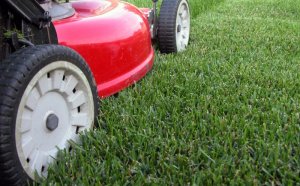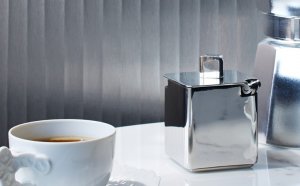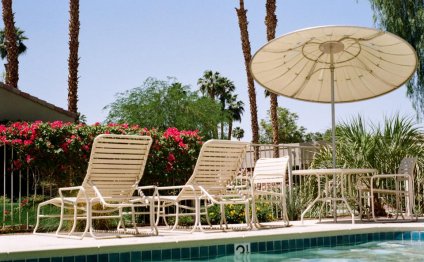
Swimming Pool Care and maintenance
To keep your pool’s water sparkling clean, a few basic maintenance steps are required. Find information on the usage of products, care and how to test your water for easy pool maintenance in this section.
The Role of the Pump
The center of the circulation system is the pump. It moves water from the pool and sends it through the filter for removal of any dust, dirt and debris prior to sending it back to the pool.
How long should you run your pump? Piping size, pool size, swimmer load and the actual pump size all play a role in determining how long you should run your pump. For the proper time consult your pool professional. They can determine, based upon your specific pool, the proper amount of time required to keep your pool clear and clean. A good rule of thumb is to run your pump about 1 hour for every 10º of temperature.
If your pump is not running, the water from your pool is not being properly circulated or filtered. Running the pump and circulating the water is the best way to help prevent problems.
The Filtration System
The job of the filtration system is to remove any undissolved dirt and debris from the pool water. While the skimmer basket and the hair and lint basket in the pump all play a role in the filtering of the pool water, the primary element of the system is the filter itself. If you backwash sand or DE filters too often, the filter cannot reach its cleaning potential and you are wasting water. Most filters require backwashing when the pressure gauge rises 8-10 psi from clean. Consult your pool professional to understand the role that the skimmer and pump basket play in keeping your pool clean. Always consult your owner’s manual for specifics related to the type of filter you have.
Filter Types
There are three types of filters that are used in swimming pools to remove dirt and debris that enter the water through swimmers and the environment.
1. Sand
2. Cartridge
3. Diatomaceous Earth (DE)
- Sand Filters - Dirt is removed from a sand filter by “backwashing” or reversing the water flow. The filter should be backwashed when the pressure gauge indicates a 7-10 lbs. increase over normal operating pressure. This is the pressure indicated on the pressure gauge when the filter is completely clean. Sand filters are more efficient when they are slightly dirty; consequently they should only be backwashed when required by the increase in pressure. Sand filters should be cleaned at least every season with a filter cleaner.
- Cartridge Filters - Dirt needs to be removed from a cartridge filter when the pressure gauge indicates an increase of 7-10 lbs. over normal operation pressure. Remove the cartridge(s) from the filter and hose off all loose dirt and debris. Then soak the element(s) in filter cleaner for at least 12 hours. This will remove all oils and greases imbedded in the filter element. After soaking, remove the cartridge(s) and rinse thoroughly with fresh water. Peak filter efficiency is achieved if you allow the filter element(s) to dry prior to reinstalling in the filter. To avoid any “down time” for the circulation or filtration systems, it is advisable to purchase a second set of cartridge elements so they may be interchanged on a regular basis with the first set.
- Diatomaceous Earth Filters - Like sand, the DE filter is cleaned by backwashing the filter when pressure increases 7-10 lbs. However, once the filter has been backwashed, new DE must be added to coat the grids in the filter. This is accomplished by pouring DE through the skimmer. To cut oils and other natural oil build-up, DE filter grids should be cleaned at least once every season using filter cleaner. Also, at least once a year the entire DE filter should be disassembled and cleaned thoroughly as well as being inspected for tears or rips in the grids.
Testing Your Pool
Testing your pool 2-3 times a week during the summer and once a week during the winter is important to maintain adequate water balance and sanitizer levels plus to insure swimmer comfort. Test strips are a quick way to test the pool for adequate sanitizer levels as well as pH and total alkalinity. Proper testing also ensures that calcium levels are maintained and that there are no metals present in the pool water. These tests can be completed by you or your pool professional. In order to prevent scaling or corrosive action and to achieve maximum swimmer comfort, the pool water should be balanced to the following levels:
|
TEST |
RANGE |
|
pH |
7.2-7.6 |
|
Total Alkalinity |
120-150 ppm |
|
Calcium Hardness |
200-250 ppm (Concrete Pools) |
|
175-225 ppm (Vinyl Pools) |
|
|
Free Chlorine |
1-3 ppm |
|
Free Bromine |
3-5 ppm |
|
Metals: Copper |
0 ppm |
|
Metals: Iron |
RELATED VIDEO
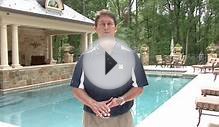
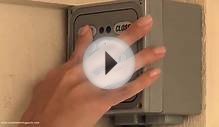

Share this Post
Related posts
Lawn Care and maintenance
You know a healthy lawn when you see it: a smooth, lush green carpet, perfect for cartwheels and croquet. So why doesn t…
Read MoreWilsonart Care and maintenance
Wilsonart ANZ – Laminate, Worktops, Panels, Surfaces, Designs
Read More